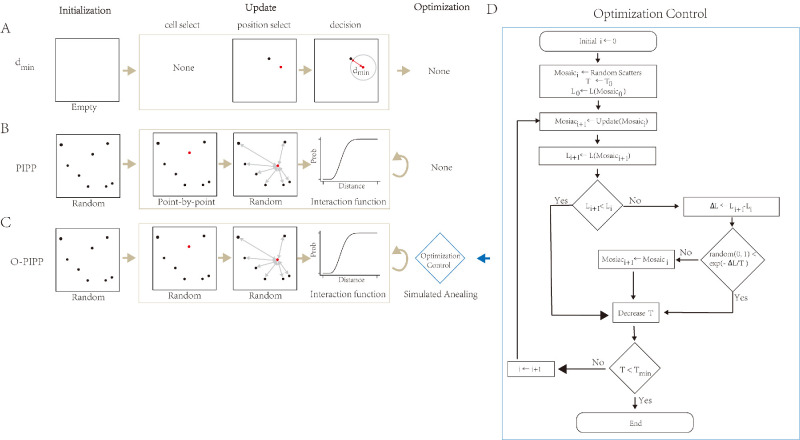Figure 1.
The “initialization–update–optimization” schema summarizes related phenomenological models and the O-PIPP approach. (A) The dmin model from Reference 21. This model begins at an empty area and inserts cells one by one until all insertions are finished. A new position is examined by the “exclusion zone” rule, and its distance to the closest neighbor must be larger than the dmin variable; otherwise, the model must find another position to satisfy the rule. (B) The PIPP model from Reference 22. This model begins at a random spatial distribution and uses a “death-and-birth” step to update all cells with a specific number of iteration steps. A selected cell is removed and reinserted into the mosaic with a new position. The selection of a position is a random process controlled by the distance-based interaction function, which forms the “exclusion zone” of cells. The PIPP model accepts all update iterations. (C) The O-PIPP approach in this work. This model incorporates simulated annealing techniques after an update to strategically accept the iteration results. (D) Schematic of the SA optimization in the O-PIPP approach.

